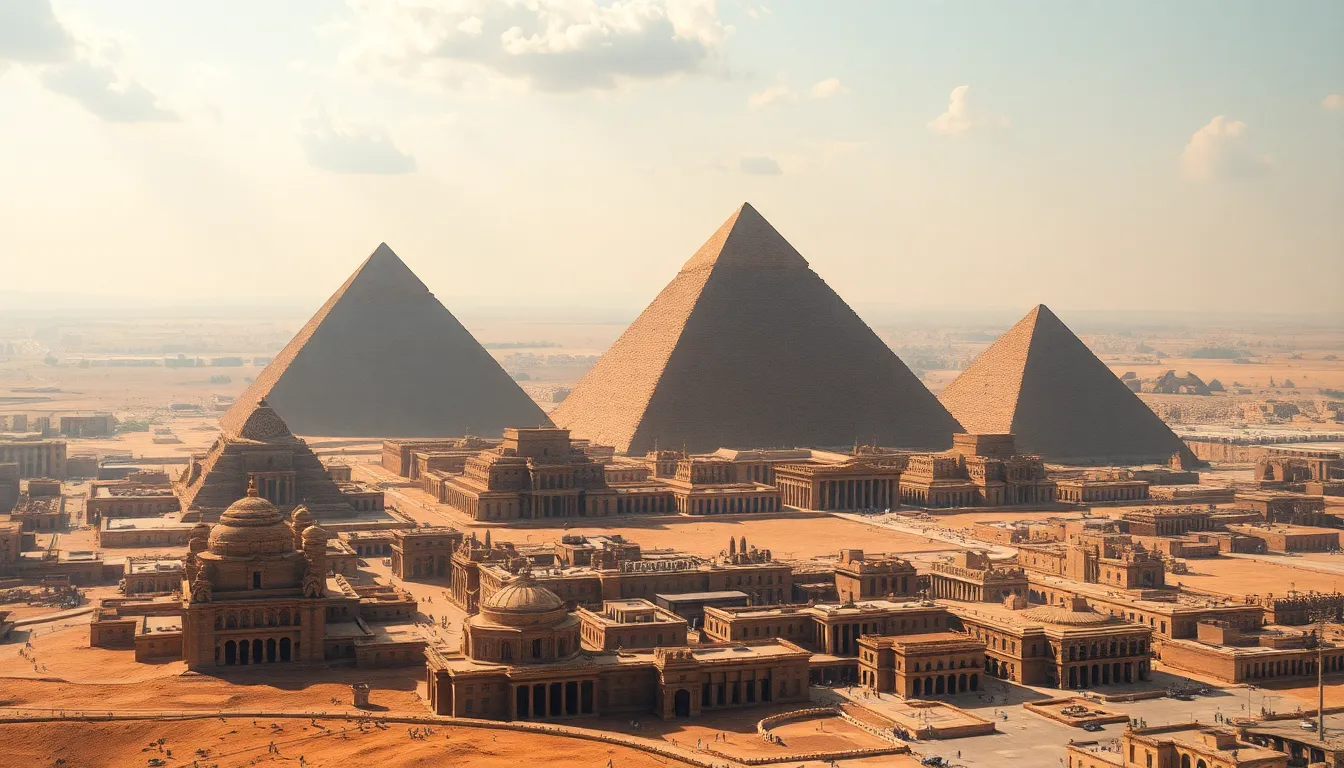The Mythical Geography of the City of Giza
I. Introduction
The city of Giza, located on the outskirts of Cairo, Egypt, stands as a testament to the grandeur of ancient Egyptian civilization. It is renowned for its monumental architecture, particularly the Pyramids of Giza and the Great Sphinx. These structures not only serve as tombs and monuments but also embody the rich tapestry of mythology intertwined with the geography of the region.
This article explores the intersection of mythology and geography in Giza, highlighting how the landscape has influenced ancient beliefs and practices. Through understanding Giza’s mythical geography, we can gain insights into the ancient Egyptians’ worldview and cultural identity.
II. The Historical Context of Giza
Giza’s history dates back to the dawn of civilization, playing a pivotal role in the development of ancient Egypt. The city flourished during the Old Kingdom period, approximately 2686 to 2181 BCE, when it became the site of monumental building projects.
- Ancient civilization and its development: Giza was a vital urban center, housing skilled laborers, artisans, and priests dedicated to constructing the pyramids.
- The role of Giza in the Egyptian empire: As the site of the Pharaohs’ monumental tombs, Giza symbolized the power and religious beliefs of the ancient Egyptians.
- Key historical figures associated with Giza: Pharaohs such as Khufu, Khafre, and Menkaure are famously linked to the pyramids, showcasing their monumental legacy.
III. The Geographic Landscape of Giza
The geographic landscape of Giza is characterized by its unique natural features, which have significantly influenced the lives of its inhabitants.
- Natural features: The city is bordered by the vast Sahara Desert, the Nile River, and the Giza Plateau.
- Urban layout and its significance: The orientation of the pyramids and temples reflects astronomical alignments and religious significance.
- Relationship between geography and ancient Egyptian life: The proximity to the Nile facilitated agriculture, trade, and transportation, crucial for the city’s development.
IV. Mythical Elements in Giza’s Geography
The geography of Giza is steeped in mythology, with its monuments symbolizing deeper spiritual meanings.
- The Pyramids and their symbolic meanings: The Pyramids were perceived as stairways to the heavens, connecting the earthly realm with the divine.
- The Sphinx as a guardian of the land: The Great Sphinx represents strength and wisdom, serving as a protector of the Pharaoh’s tombs.
- Sacred sites and their mythological relevance: Temples in Giza, such as the Mortuary Temple of Khufu, were dedicated to the worship of gods and the afterlife.
V. The Influence of Egyptian Mythology on Giza
Egyptian mythology profoundly influenced the cultural landscape of Giza, shaping its identity and significance.
- Major deities and their connections to the city: Gods such as Osiris, the god of the afterlife, and Ra, the sun god, were integral to the religious practices in Giza.
- Mythological stories that shaped Giza’s identity: Tales of resurrection and the afterlife were central to Giza’s role as a burial site for Pharaohs.
- Temples and monuments as expressions of myth: Structures were often adorned with inscriptions depicting mythological stories and prayers to the gods.
VI. Modern Interpretations of Giza’s Mythical Geography
In contemporary times, Giza continues to captivate the imagination and inspire various interpretations of its mythical geography.
- Archaeological discoveries and their implications: Ongoing excavations reveal new insights into ancient practices and beliefs, enhancing our understanding of Giza’s significance.
- The role of tourism in reshaping perceptions: Millions visit Giza each year, influencing how the site is perceived and appreciated in modern culture.
- Contemporary mythology and cultural narratives: Giza remains a symbol of mystery and wonder, sparking new myths and stories in literature and popular culture.
VII. Preservation of Giza’s Mythical Heritage
Preserving Giza’s archaeological sites presents numerous challenges, but efforts are being made to safeguard its mythical heritage.
- Challenges facing Giza’s archaeological sites: Urban development, environmental factors, and tourism impact the integrity of these ancient sites.
- Conservation efforts and their importance: Initiatives aimed at restoration and protection are essential to maintain the historical and cultural significance of Giza.
- The role of local communities in heritage preservation: Engaging local populations in preservation efforts fosters a sense of ownership and pride in their heritage.
VIII. Conclusion
In summary, Giza’s mythical geography is a rich tapestry woven from history, culture, and spirituality. The Pyramids, the Sphinx, and the surrounding landscape embody the ancient Egyptians’ beliefs and aspirations.
As Giza continues to resonate in modern culture, its significance remains unyielding. Future research and exploration promise to unveil more about this iconic city, ensuring that its mythical heritage is preserved for generations to come.




